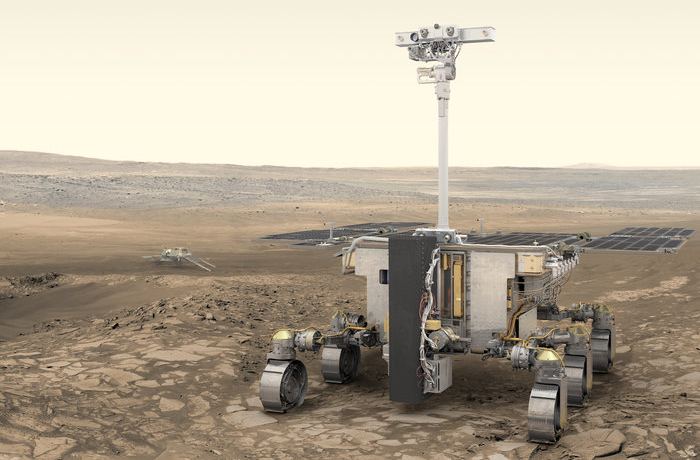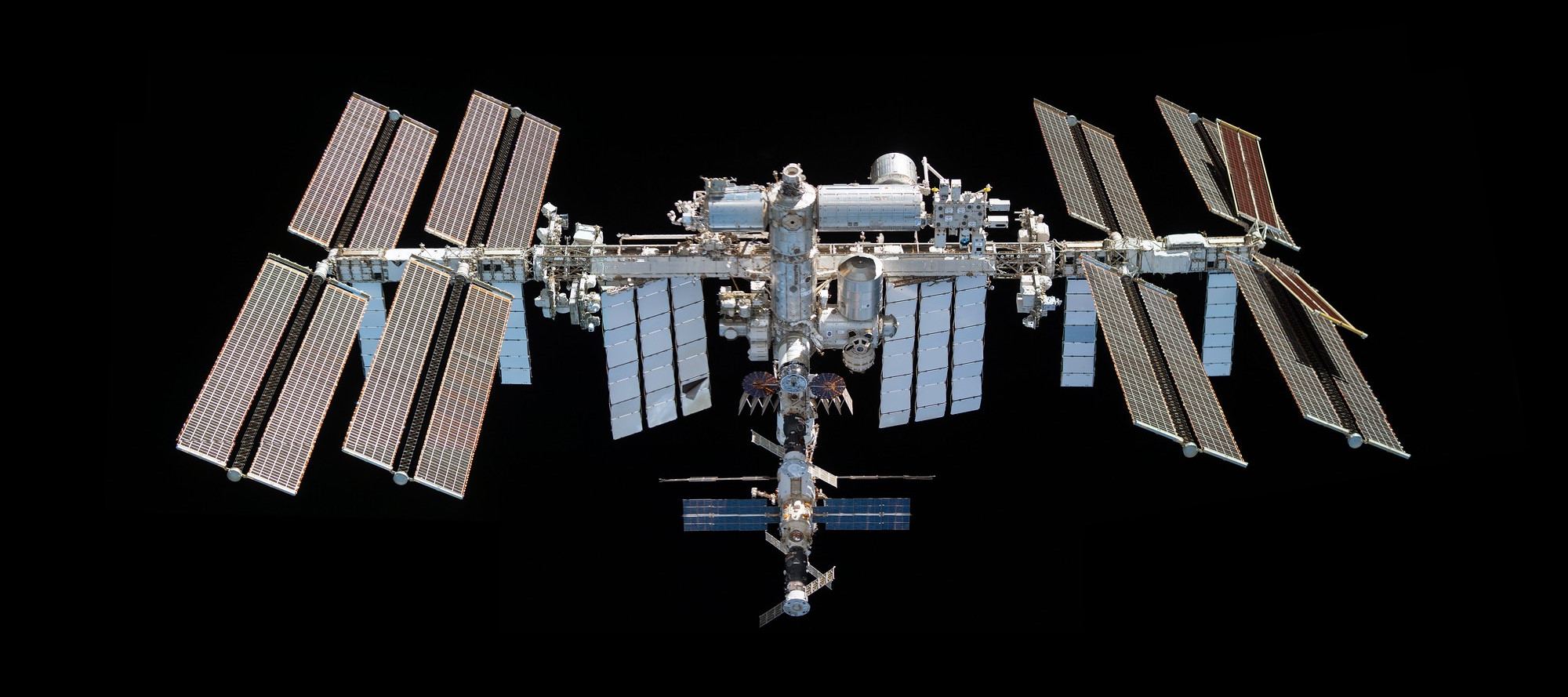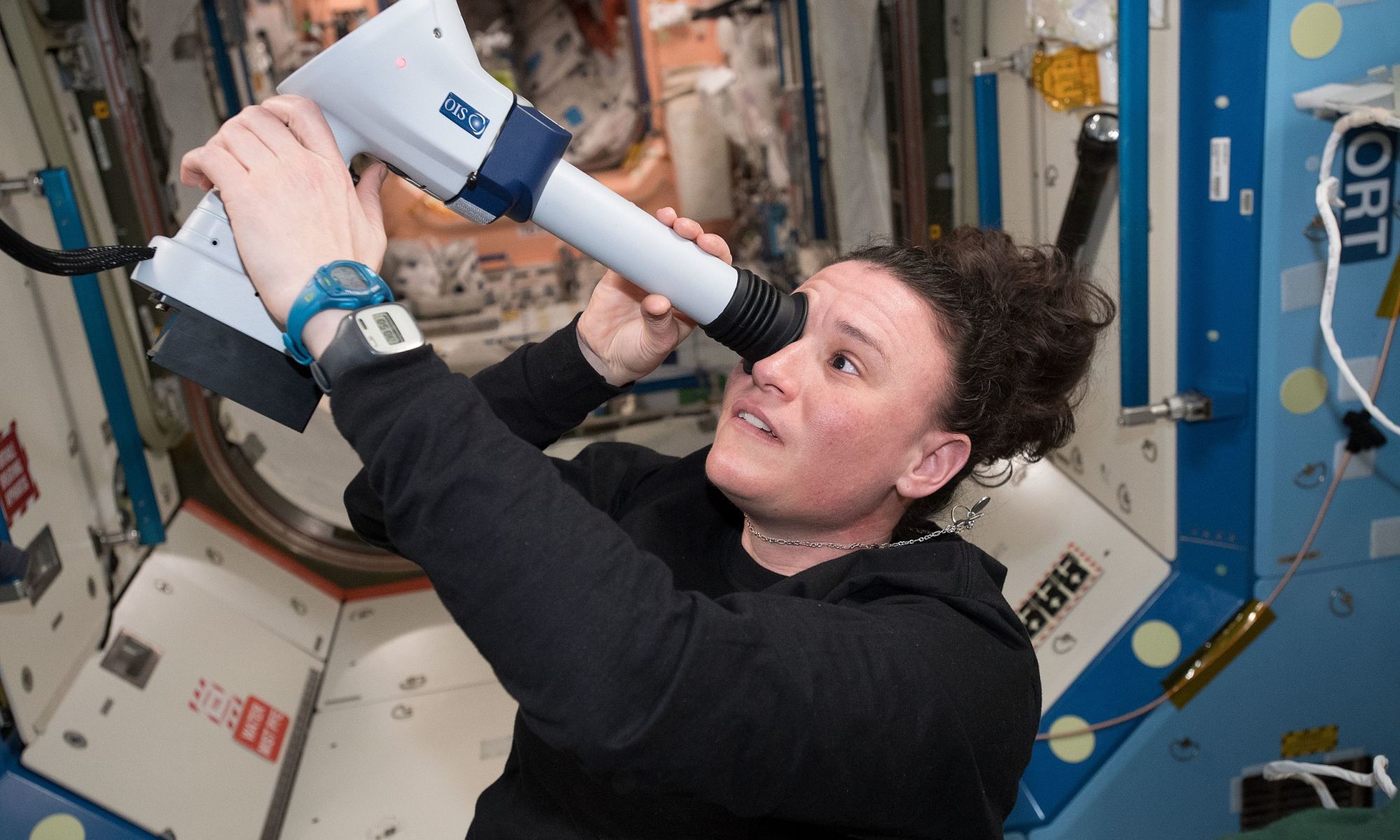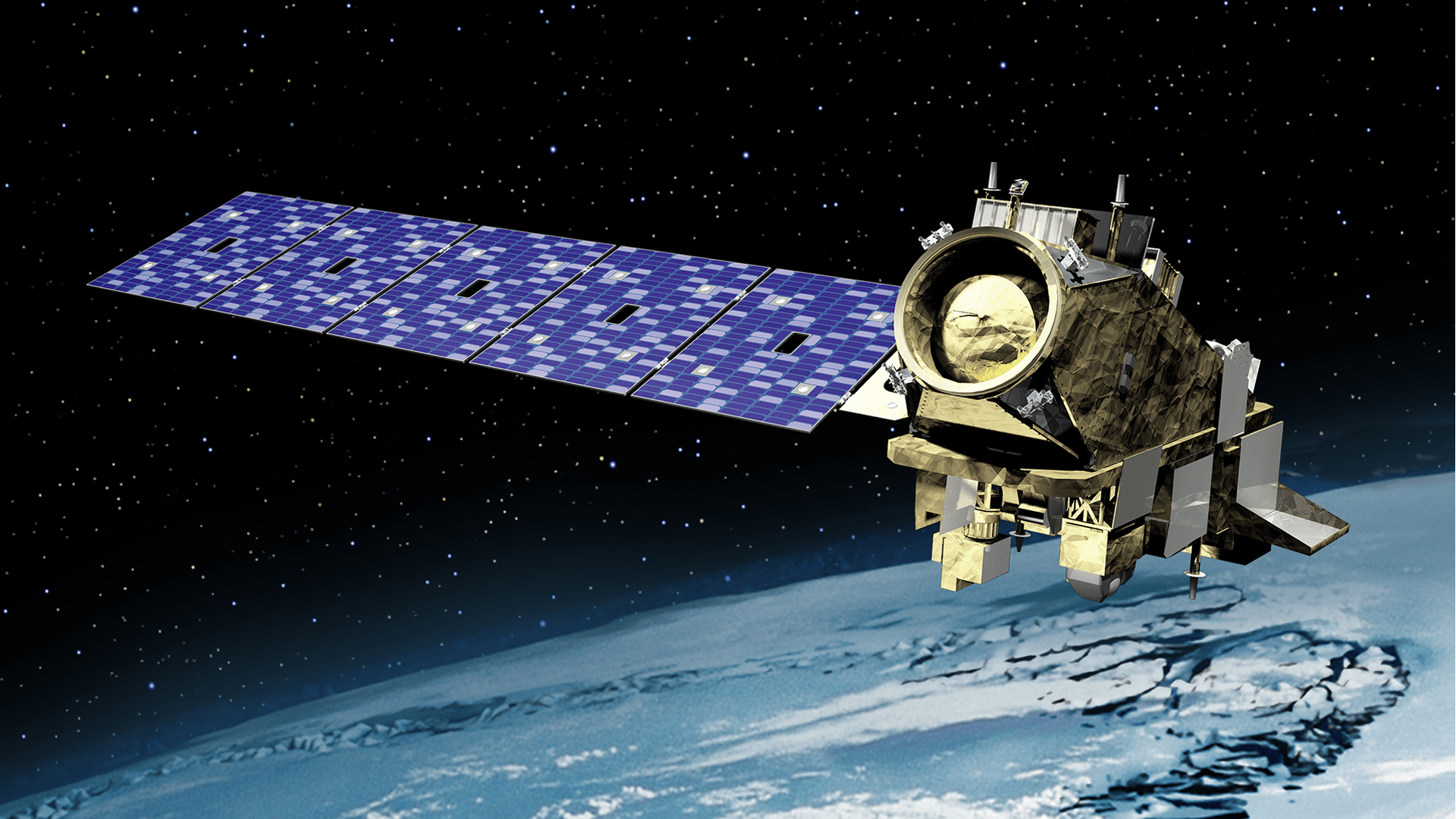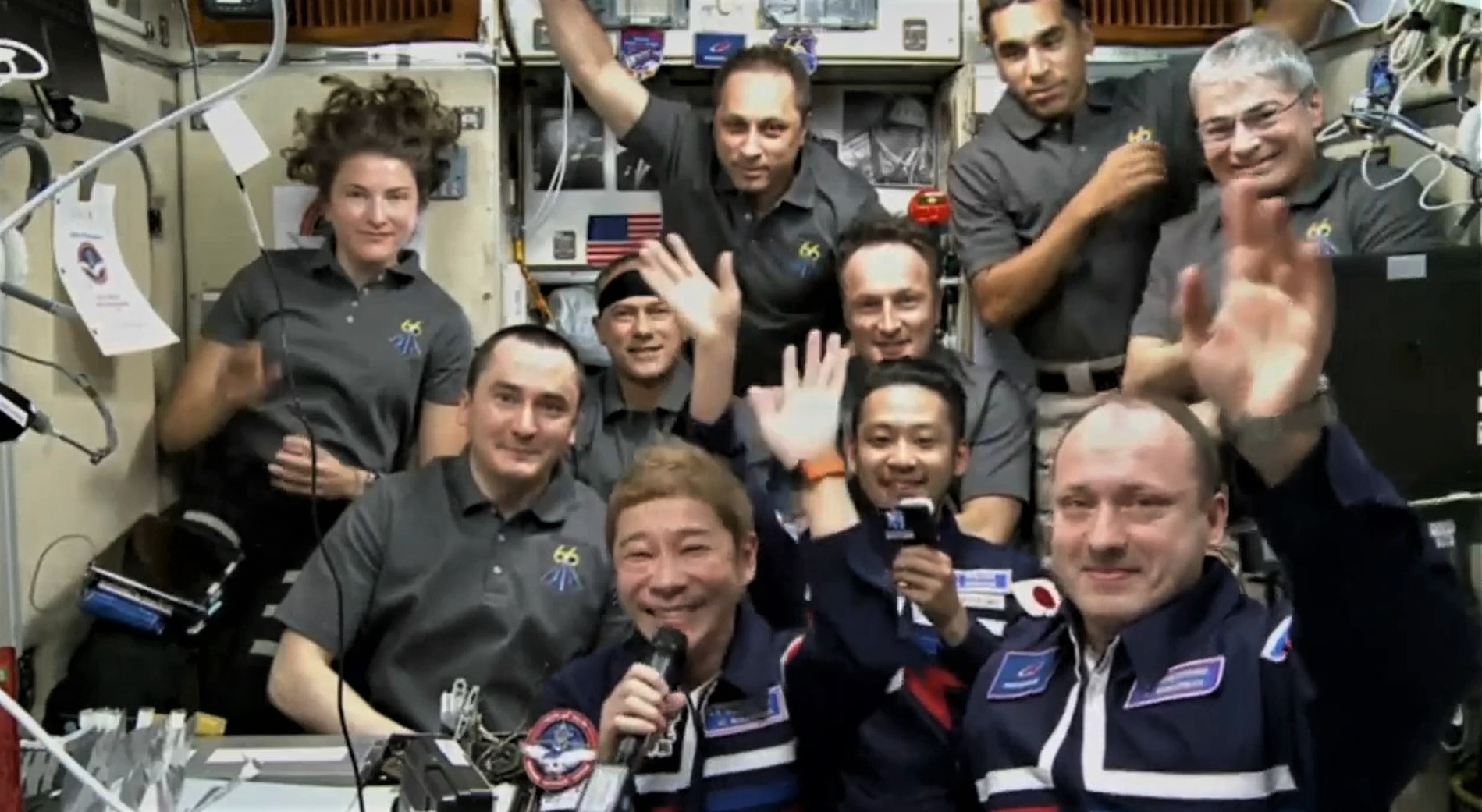Japanese billionaire Yusaku Maezawa has begun his first space adventure — an 11-day visit to the International Space Station that could serve as the warmup for a round-the-moon trip to come.
Maezawa, production assistant Yozo Hirano and Russian cosmonaut Alexander Misurkin rode a Soyuz capsule into orbit from Russia’s Baikonur Cosmodrome in Kazakhstan, with launch coming at 0738 GMT December 8 (12:38 p.m. local time, 2:38 a.m. EST).
Hours later, the Soyuz docked with the station, and the trio floated inside to meet the orbital outpost’s seven other spacefliers. Maezawa was all smiles as he greeted family and friends back on Earth over a video link.
Before liftoff, the 46-year-old entrepreneur and art collector said he was looking forward to his journey.
“I feel excited like an elementary student waiting for a school trip,” he said at a news conference. “I want to see the Earth from space, float in zero gravity, and see how I will change through this experience. I was blessed with this opportunity, and I’m truly happy I can go.”
Continue reading “‘I’m Truly Happy’: Japanese Billionaire Yusaku Maezawa Floats Into Space Station”
